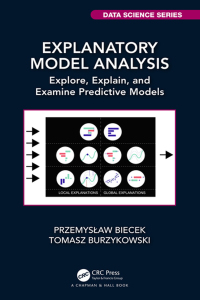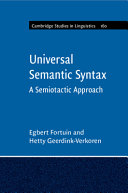Buy Explanatory Model Analysis: Explore, Explain, and Examine Predictive Models 1st Edition PDF ebook by author Przemyslaw Biecek; Tomasz Burzykowski – published by Chapman & Hall in 2021 and save up to 80% compared to the print version of this textbook. With PDF version of this textbook, not only save you money, you can also highlight, add text, underline add post-it notes, bookmarks to pages, instantly search for the major terms or chapter titles, etc.
You can search our site for other versions of the Explanatory Model Analysis: Explore, Explain, and Examine Predictive Models 1st Edition PDF ebook. You can also search for others PDF ebooks from publisher Chapman & Hall, as well as from your favorite authors. We have thousands of online textbooks and course materials (mostly in PDF) that you can download immediately after purchase.
Note: e-textBooks do not come with access codes, CDs/DVDs, workbooks, and other supplemental items.
eBook Details:
Full title: Explanatory Model Analysis: Explore, Explain, and Examine Predictive Models 1st Edition
Edition: 1st
Copyright year: 2021
Publisher: Chapman & Hall
Author: Przemyslaw Biecek; Tomasz Burzykowski
ISBN: 9780429027192, 9781000173956
Format: PDF
Description of Explanatory Model Analysis: Explore, Explain, and Examine Predictive Models 1st Edition:
This book serves as a reader exploring the scholarly inquiry, professional education, and practice of Russian public relations and advertising in multiple contexts. It examines significant parts of what can be encompassed under the umbrella of strategic communications, including public relations and advertising, rather than investigating all areas of communication in Russia. Within the context of Russia’s history, culture, and ideology, the book begins by tracing the development of communication as a field, as a discipline, and as a social institution in Russia. It then samples current studies in Russian strategic communications, examining this professional specialization’s current state and likely future directions. The book’s authors are mostly Russians who are experts in their specializations. Chapters are predicated upon the premise that this is an exciting time of great opportunity for Russian strategic communications. However, in Russia, exploiting such opportunities for strategic communications scholarship, education, and professional practice presents challenges within the context of that nation’s cultural, historical, and ideological heritage that presently may be unique. The book concludes with a prognosis of the future of Russian strategic communications. The book is recommended reading for a worldwide audience of strategic communications scholars, educators, students, and practitioners. Such readers will find the book of interest and of unique value as the book will help them to better understand, appreciate, and respect Russian strategic communications, its genesis, and present state.





